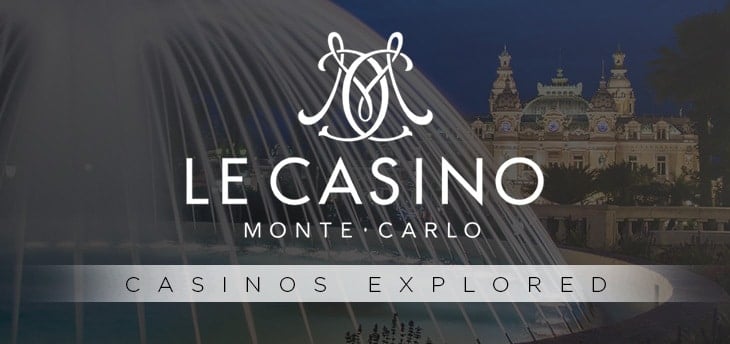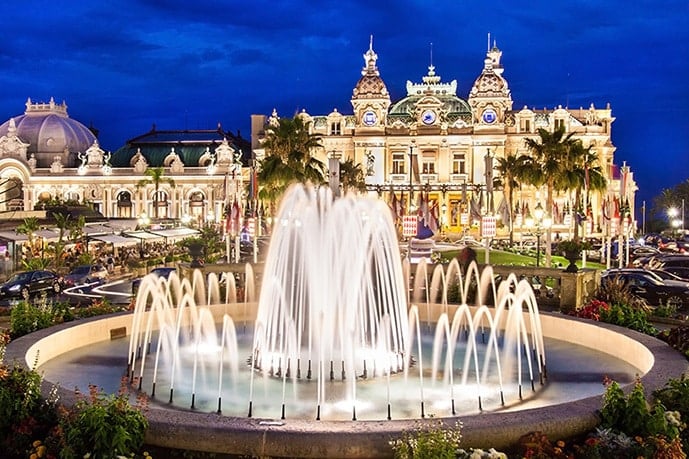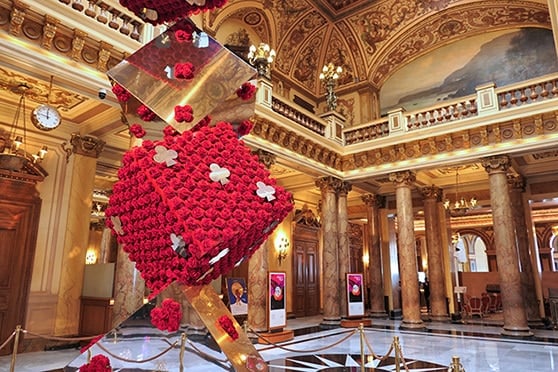Casinos Explored – The Monte Carlo

Every year, more than 7 million tourists take selfies before one particular building in Monaco. That place is none other than the Casino de Monte-Carlo, one of the world’s oldest and most prominent casinos. It’s the crown jewel of Monaco, and the reason the country is considered one of the world’s “gambling meccas.”
While the casino’s present-day reputation is impressive, its rich history is just as important. Today, we’ll do a deep dive into the casino’s past, from its creation by royals to its meteoric rise to the top.
The Early 1800s: Monaco’s Royals
In the first half of the 19th century, Monaco was struggling. The country’s citizens couldn’t afford the exorbitant taxes of the royal family, and things looked grim. Faced with a potential uprising, the sovereign Prince Charles III and his mother, Princess Caroline, looked for a solution.
Caroline had recently visited Bad Homburg, a small spa town. It had an incredibly successful casino, run by Frenchman François Blanc in partnership with the town’s ruler. Hearing this, the Monaco royal family contacted Blanc to propose a collaboration.
Blanc was a cunning businessman, inventing unorthodox methods to popularize his casinos. He made a big show out of gamblers “breaking the bank” and winning all the available money at the table. Blanc would declare the table temporarily out of commission by placing a black cloth over it. Then, attendants would bring cash from the vaults to refill the table’s reserves. After a while, the cloth was lifted and the table was declared operational.
With such a grand ceremony, news of the gambler’s lucky win would quickly spread. This would draw more people to the casino, allowing the establishment to recoup their earnings from all the new gamblers.
At first, Blanc refused the family’s request. Other entrepreneurs took his place, establishing a casino overlooking the country’s harbor. However, the establishment failed to gain any traction. On the verge of bankruptcy, the family made one final appeal, which Blanc accepted.

1863: Blanc Takes Over
In 1863, Blanc became the casino director, receiving free rein to improve the facilities and run it however he wished. In exchange, he would give Prince Charles III an annual fee of 150,000 francs, plus ten percent of the casino’s profits.
Blanc’s first order of business was renaming the area of the casino “Monte Carlo,” meaning “Mount Charles” in honor of the prince. By 1869, the casino became so successful that the government just stopped taxing citizens – and they still don’t to this day.
1889: The Rule of Prince Albert
Even after Blanc’s passing in 1877, the casino remained prosperous thanks to his son, Camille. However, when Prince Charles III died in September 1889, everything changed. His son, Albert, strongly opposed the casino, claiming he would shut it down if he could.
Of course, the casino was too vital to Monaco’s economy for Albert to shut it down. However, one month into his rule, everything changed. Albert married Alice Heine, an exceptionally rich American widow. With her wealth, Albert was no longer reliant on the casino.
By 1891, things looked bleak for the Monte Carlo. The Prince was planning to turn it into a hospital, and Camille Blanc was reportedly looking to transfer the casino to Liechtenstein. It seemed almost inevitable that Albert would shut down the casino, but a single English businessman changed everything.

1891: Charles Wells Breaks the Bank
From late July to early August 1891, one English businessman became the talk of the town in Monaco. His name was Charles Deville Wells, and he earned that fame from playing roulette more recklessly than anyone had ever seen. With seemingly endless funds, he gambled his heart out, playing whenever the casino was open.
The most surprising thing about Wells’ gambling spree was that it worked. Over the course of five days, he “broke the bank” an astonishing twelve times. Back then, casinos didn’t use chips. This meant Wells was constantly buried in piles of notes and chips, attracting everyone’s attention.
Wells ended up winning €40,000 in total – equivalent to 4 million today. He became famous all throughout Britain, even being immortalized by composer Fred Gilbert in the song “The Man Who Broke the Bank at Monte Carlo.”
After his five-day gambling spree, Wells left Monaco, leaving many people wondering how he did it. Was it really just luck? Did Wells invent a new method to succeed at roulette? Or was he simply a cheater? These questions were never answered, even after Wells returned to the casino a second time a few months later, earning an additional €20,000.
One thing was certain: Wells’ gambling escapades caused the Monte Carlo’s popularity to skyrocket. Countless new visitors arrived, all trying – and failing – to recreate Wells’ success. In the face of this massive growth, Camille Blanc was able to negotiate a new contract with the Prince, keeping the Monte Carlo alive.

Present-day: The Monte Carlo Lives On
Today, the Monte Carlo’s reputation as one of the world’s top casinos endures. Despite new additions and expansions, the casino still uses its original Belle Époque decoration style. The Monte Carlo is also a fixture in mainstream media, often used in movies like the James Bond franchise.
One of the most interesting facts about the modern-day Monte Carlo is that Monaco citizens, known as the Monégasque, are not allowed within the casino. This gambling ban dates all the way back to the rule of Prince Charles III, intended to stop the country from going further into debt.
